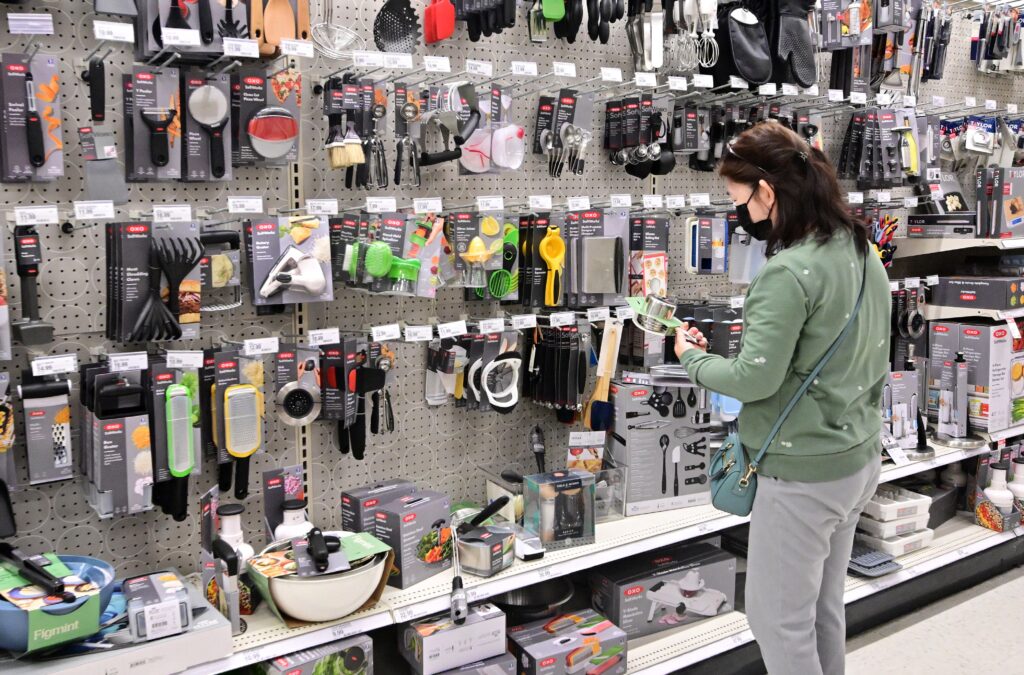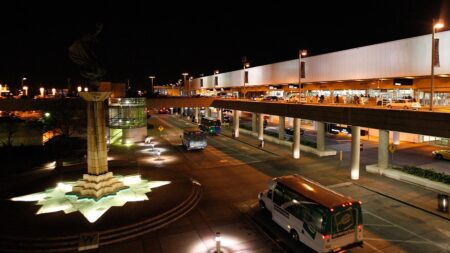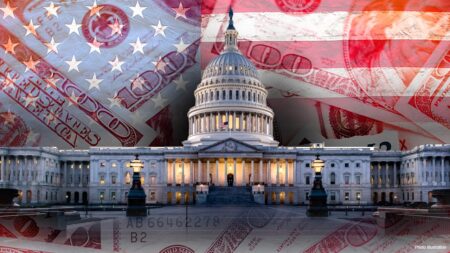Americans pumped the brakes on spending in May as they continued to face high interest rates and steeper prices for everyday goods.
Retail sales, a measure of how much consumers spent on a number of everyday goods including cars, food and gasoline, rose just 0.1% in May, the Commerce Department said Tuesday. That is notably lower than the 0.3% increase forecast by LSEG economists, although it is higher than the revised 0.2% drop recorded in April.
Excluding the more volatile measurements of gasoline and autos, sales also climbed just 0.1 % last month.
The May advance is not adjusted for inflation, meaning that consumers may be spending the same but getting less bang for their buck.
SILVER LINING OF HIGHER INTEREST RATES: SAVINGS ACCOUNT RATES
“The ho-hum retail sales figures are probably in line with what the Federal Reserve expects and wants,” said Ted Rossman, senior industry analyst at Bankrate. “The softness that we’re seeing indicates that high interest rates are dampening demand, but not excessively so.”
Consumers spent money last month at car dealerships, electronics stores, health and personal care stores, clothing stores and when online shopping. The biggest increase took place at sporting goods, hobby, musical instrument and book stores, with spending rising by 2.8%.
| Ticker | Security | Last | Change | Change % |
|---|---|---|---|---|
| WMT | WALMART INC. | 67.42 | +0.40 | +0.60% |
| HD | THE HOME DEPOT INC. | 349.50 | +2.66 | +0.77% |
| LOW | LOWE’S COMPANIES INC. | 226.86 | +3.51 | +1.57% |
| TGT | TARGET CORP. | 145.00 | +3.83 | +2.72% |
However, they pulled back their spending at furniture and home stores, building material and garden stores, grocery stores, gas stations and bars and restaurants.
INFLATION IS UP 20% SINCE BIDEN TOOK OFFICE
Sales rose in eight of 13 retail categories last month.

A solid job market and big wage increases have helped to buoy consumer spending in recent months, despite high inflation. However, many economists have been predicting that consumers will grow more cautious as student loan payments resume and high interest rates continue to work their way through the economy.
On top of that, more Americans are relying on their credit cards to cover necessities. Credit card debt surged to a new record at the beginning of 2024, while delinquencies are also on the rise.
“Consumer spending is cooling in a fairly orderly fashion,” said Jeffrey Roach, chief economist at LPL Financial. “So far, the economy could pull off a soft landing, especially if the Fed is quick to adjust policy as conditions change.”
Read the full article here











